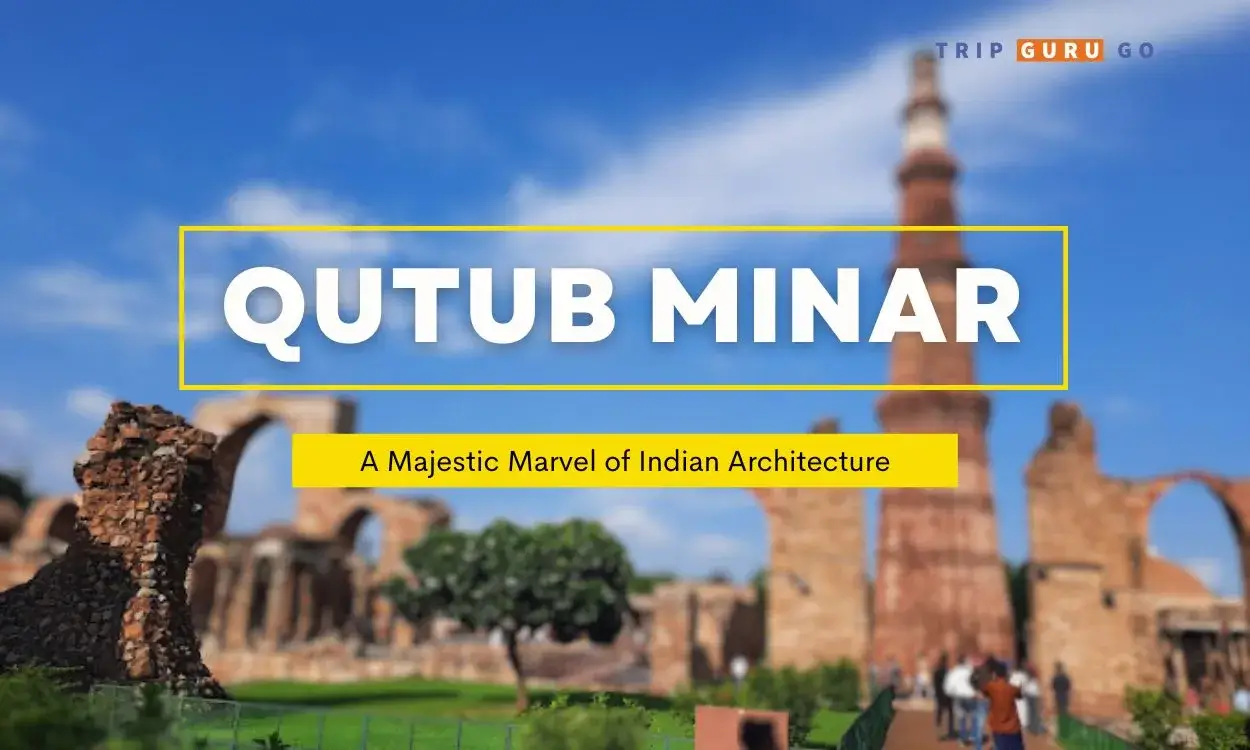About Qutub Minar
Welcome to our complete guide to the famous Qutub Minar in Delhi, India. This building gem is one of the best places to visit in Delhi in 2024. This beautiful building is also a UNESCO World Heritage Site and a sign of the country’s great past. It is 73 meters tall and has a high height. In this article, we’ll learn more about this amazing monument’s long past, complex design, and cultural importance. People come from all over the world to see this old site, which has a lot of interesting stories about its past. Explore its beauty, find out what it means, and find out when it opens and how much it costs to plan your trip back in time.
Qutub Minar History:
The Qutub Minar’s history is a fascinating story of building talent and historical significance. This iconic monument’s history spans centuries, reflecting India’s rich heritage and cultural diversity. The Qutb Minar is a tall building that shows how grand India was when it was ruled by Islam. In 1192, Qutb-ud-din Aibak, the first ruler of the Delhi Sultanate, began building it. Initially, builders constructed the Qutb Minar as a triumphal tower, but over time, it has evolved into a symbol of religion and architectural prowess.
- Construction initiated by Qutb-ud-din Aibak: Qutb-ud-din Aibak, the first Sultan of Delhi, started the construction of the Qutub Minar in 1193 AD.
- Victory Tower and Islamic symbolism: Muslim rulers built it as a victory tower to celebrate their triumph over Hindu rulers.
- Persian and Afghan architectural inspiration: The Qutub Minar drew inspiration from Persian and Afghan architectural styles, reflecting the cultural influences of the time.
- Contribution of various rulers: Rulers like Iltutmish, Alauddin Khalji, and Firoz Shah Tughlaq added their unique architectural elements to the tower.
- Minaret for Quwwat-ul-Islam Mosque: Initially, it served as a minaret for the nearby mosque, symbolizing Islam’s victory.
- Calligraphy and inscriptions: Intricate calligraphy and Quranic verses adorn the tower’s surface, along with construction details.
- Earthquakes and restoration: The Qutb Minar has endured earthquakes and undergone restoration to preserve its structure.
- UNESCO World Heritage Site: Designated as a UNESCO World Heritage Site in 1993 for its historical and cultural significance.
- Cultural significance and tourism: The Qutub Minar attracts tourists worldwide, admired for its architecture, history, and cultural importance.
The Qutb Minar is an important feature in Delhi. The India Travel Guide gives a short summary of its history and building heritage to show the cultural beauty of the country.
Qutub Minar Photos & Images
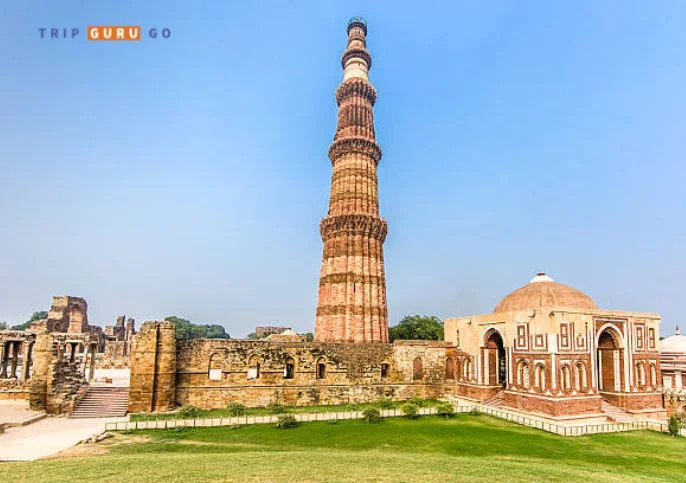
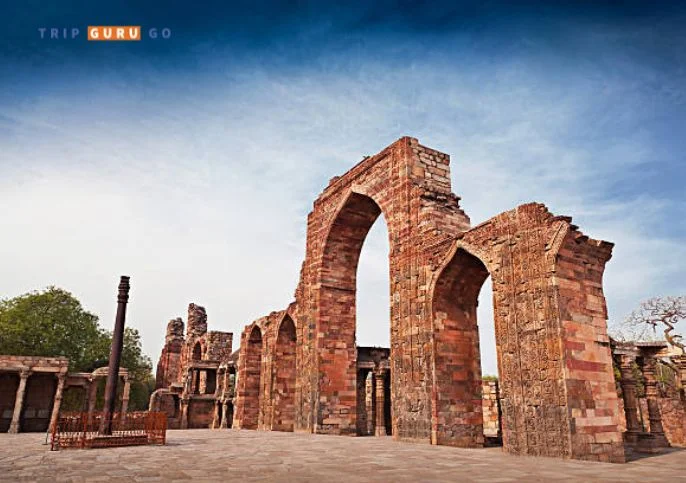
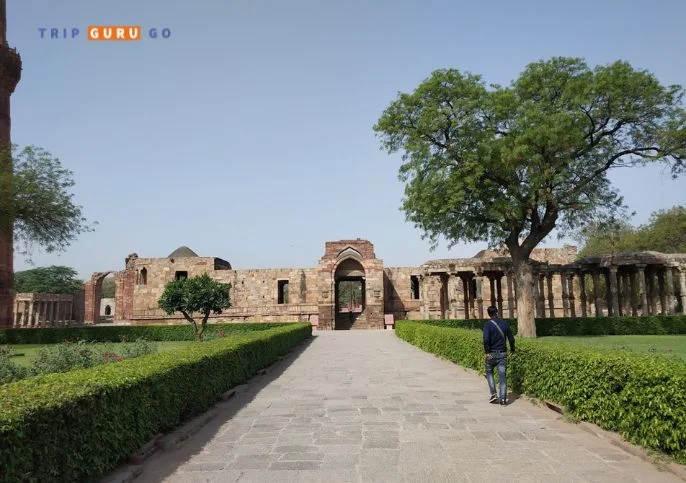
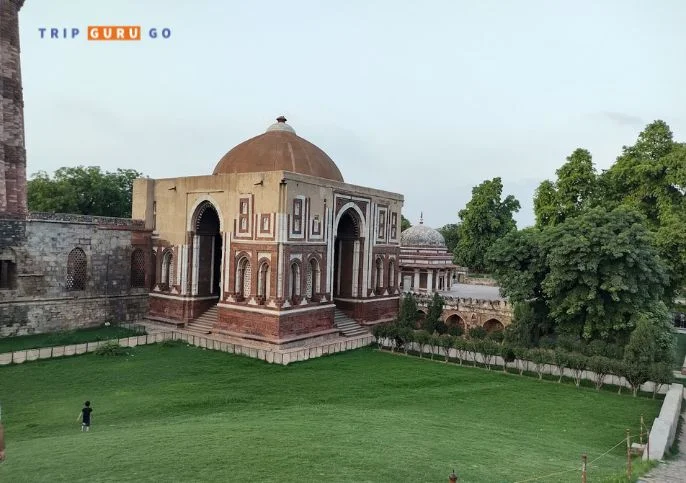
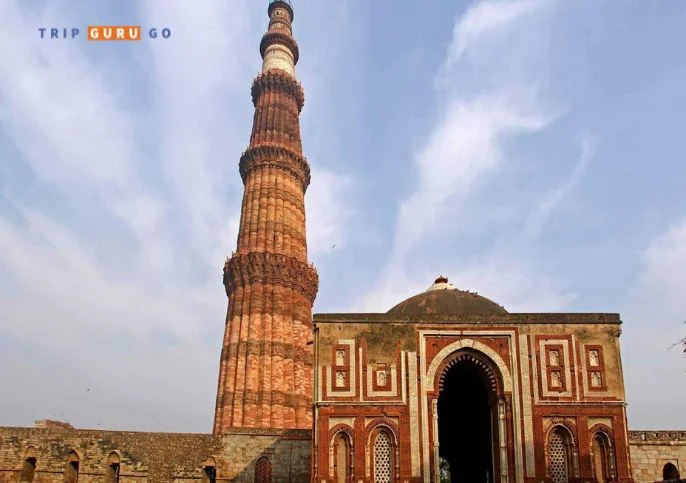
Qutub Minar Architecture:
The Qutb Minar architecture showcases Islamic architecture, blending influences into a harmonious design. With intricate carvings and Quranic verses, it captivates with red sandstone and marble.
The architecture of the Qutub Minar is a mix of Islamic and Southwestern Asian styles. It shows how Islam spread to South Asia and changed the buildings there. The tower is different from churches in the Middle East as it was inspired by local Indic buildings. This tower was built using various materials and methods. There were few such tower minarets in South Asian Islamic buildings until the 17th century. When India started adopting the styles of the Middle East. The Qutub Minar is also separate from the main mosque, which shows how local culture had an effect. People think it is a mix of Hindu and Muslim customs because Hindu workers built it under the direction of Muslim builders. The result is a unique blend of the styles of both religions.
In New Delhi, the Qutub Minar complex shows off the building and artistic skills of India’s Islamic masters from the 12th century. It brought standard Islamic buildings to India by blending parts of Hindu and Jain temples and carving styles from those temples.
The Qutub Minar is a tall brick tower that stands 72.5 meters tall and has decks where the call to prayer can be heard. A patio iron pole adds to the building’s Indian style. Nearby is the tomb of Iltutmish, which was built in the 13th century and was the first royal tomb in India. Allaudin Khilji later added a formal entrance and a place to learn called a madarsa to the building. The unfinished Alai Minar tower was also meant to be taller than the 25-meter Qutub Minar.
The Qutub Minar is an architectural marvel, renowned for its unique design, intricate carvings, and cultural significance. It stands as a remarkable example of Indo-Islamic architecture.
The Five Storeys of Qutub Minar
The Five Storeys of Qutub Minar are a remarkable feature of this iconic monument. It is a must-see in Delhi because each level has beautiful craftsmanship and historical importance. As you go up the Qutb Minar, you can see that it has five different floors, each of which offers a different architectural experience:
- First Storey: Imposing Grandeur – The first storey of the Qutub Minar serves as its base. On the ground floor, the red rock is carved with elaborate writing and geometric designs. The Alai Darwaza, a great main gate, welcomes people into this beautiful building.
- Second Storey: An Exquisite Transition – When people go to the second storey, they see a beautiful mix of red rock and marble. The skill of the builders is even more clear here, where small flower designs are painted on the walls.
- Third Storey: Awe-Inspiring Balconies – When people get to the third storey, they can see beautiful porches and balconettes with carefully made posts. These design features not only make the building look better, but they also support it.
- Fourth Storey: Ornate Beauty – The fourth storey boasts an intricate network of balconies, each adorned with captivating designs. These decks not only give you a wide view of the scenery around you, but they also show how much care went into building the tower.
- Fifth Storey: The Crown Jewel – At the top of the Qutb Minar, on the fifth and last storey, you can see amazing views of the area. From here, people can look out over Delhi’s vast scenery and get a sense of the city’s long past.
Cultural Significance of Qutub Minar
The Qutb Minar stands as a symbol of religious harmony and architectural brilliance. This structure is a UNESCO World Heritage Site, so people from all over the world come to see it because of its historical and cultural importance.
- Symbol of historical events: The Qutub Minar is a sign of important historical events and power changes in the area. It represents the victory of Islam over Hindu masters.
- Cultural diversity: Its design is a mix of Persian, Afghan, and Indian styles, which shows how different cultures and art styles were at the time.
- Architectural legacy: The Qutb Minar’s design and style have influenced the next structures in India, contributing to the evolution of architectural practices.
- Tourist attraction: It is a cultural icon that millions of people visit every year to learn about India’s history, buildings, and artistic customs.
- Educational importance: The Qutub Minar provides educational value by allowing visitors to learn about medieval Indian history, architectural styles, and the cultural context of the era.
- Inspiration for artists: The monument’s majestic presence and intricate beauty have inspired artists, writers, and creatives across various art forms.
- National pride: The Qutub Minar is very important to the people of India because it represents their culture and history and makes them feel proud of their country.
The Qutub Minar is important to culture because it shows history, different cultures, and the impact of architecture. It makes people feel proud of their country, and its lasting appeal makes it an important part of India’s culture.
Preservation Efforts
Preserving the Qutb Minar for future generations is of paramount importance. Several projects to fix and protect the building have been done to keep it in good shape and protect it from the elements. These efforts make sure that this building gem will continue to amaze people for ages to come.
Visiting Information
Qutub Minar Timings:
Qutub Minar Timings explorers daily from Monday to Sunday, offering access from 7:00 AM to 9:00 PM for a historical journey. This place is open to visitors throughout the week. The timings are as follows:
- Monday to Sunday: 7:00 AM to 9:00 PM
- Please keep in mind that these times may change. Before planning your trip, check the official website or call the authorities.
Qutub Minar Ticket Price 2024:
The 2024 Qutub Minar ticket prices are ₹35 for Indian visitors and ₹550 for foreigners. Remember to budget accordingly for your visit to this iconic monument in Delhi. The entry fee for visiting the Qutb Minar is as follows:
Here’s the ticket price information:
| Visitor Type | Ticket Price (in INR) |
|---|---|
| Indian | ₹35 |
| Foreigner | ₹550 |
Qutub Minar’s Nearest Metro Station and Railway Station:
When planning your visit to the historic Qutub Minar. It’s essential to know the nearest metro stations for convenient access. These Delhi metro stations make exploring this iconic monument hassle-free.
| Metro Station | Distance from Qutub Minar (KM) |
|---|---|
| Qutab Minar Metro Station | 0.1 KM |
| Chhatarpur Metro Station | 1.2 KM |
| Saket Metro Station | 1.7 KM |
| Malviya Nagar Metro Station | 2.6 KM |
| Sultanpur Metro Station | 2.8 KM |
So, use the metro station that is nearest the Qutub Minar and learn about its rich history.
- Nearest metro station: Qutub Minar Metro Station and Chhatarpur Metro Station
- Metro line: Delhi Metro’s Yellow Line
- Nearest railway station: Hazrat Nizamuddin Railway Station
- Distance from Minar: Approximately 14 kilometers
How to Reach Qutub Minar:
Visitors can reach the Qutub Minar by various means of transportation:
- By Metro: Take the Yellow Line of the Delhi Metro and deboard at Qutub Minar Metro Station. From there, it is a short walk to the monument.
- By Bus: Public buses and tourist buses operate in and around Delhi, providing convenient access to the Qutb Minar. You can easily get to the famous Qutub Minar by bus, which you can choose from among several. You can take Bus 400, 460CL, 47ASTL, 512, 540ACL, 615, or 962SPL. Each of these buses takes you through the busy streets of Delhi in a different way.
- By Taxi or Auto-Rickshaw: Taxis and auto-rickshaws are readily available in Delhi and can be hired to reach the Qutub Minar.
Best Time to Visit Qutub Minar:
- The best time to visit: October to March
- Weather: Pleasant and suitable for outdoor exploration
- Avoid crowds: Visit early in the morning or late in the afternoon
- Serene ambiance: Enjoy the peaceful atmosphere of the monument
Places to visit nearby attractions of Qutub Minar:
Exploring Delhi’s history is about more than the Qutub Minar. There are a lot of interesting places to see near the Minar that add to your history journey. Here are the names of the places near Qutub Minar:
- Mehrauli Archaeological Park
- Alai Darwaza
- Iron Pillar of Delhi
- Qila Rai Pithora
- Local Bazaars
- Lotus Temple
- Iskcon Temple
- India Gate
- Humayun’s Tomb
- Red Fort
- Lodhi Garden
- Chandni Chowk
In the end, if you are planning a trip to Qutub Minar, don’t miss out on the many interesting places you can visit nearby. These attractions enrich your experience of Delhi’s rich history and culture.
Things to Do at Qutub Minar:
Qutub Minar welcomes you on a journey through time. Explore the complex Alai Darwaza, read the signs to learn about India’s history, and take pictures of its beauty. Here are some tips for making the most of your trip:
| Activity | Description |
|---|---|
| Explore the Qutub Complex | Learn about Alai Darwaza and the Quwwat-ul-Islam Mosque, both historic structures. |
| Learn About History | Read signs and plaques to uncover the site’s fascinating history. |
| Photography | Capture intricate details and the majestic Qutub Minar in photos. |
| Picnic and Relax | Enjoy a leisurely picnic on the green lawns amidst the historic ambiance. |
| Visit Nearby Attractions | Explore the Mehrauli Archaeological Park and other nearby historical sites. |
| Attend Cultural Events | Immerse in India’s heritage through cultural performances and events. |
| Shop for Souvenirs | Purchase traditional handicrafts and textiles from local shops. |
| Savor Local Cuisine | Experience street food or dine at a classic Indian restaurant for local flavors. |
| Reflect | Take a moment to contemplate the historical significance of this remarkable site. |
Shopping Market Near Qutub Minar:
Near Qutub Minar, you can go to the lively and busy shops of Mehrauli and Chhatarpur. These markets are perfect for buying souvenirs and local handicrafts. Explore colorful textiles, traditional jewelry, and unique trinkets. Don’t forget to haggle a bit to get the best deals!
Monuments Near Qutub Minar:
There are many interesting ancient buildings near Qutub Minar. You can look at the detailed designs at Alai Darwaza, which is an old gate. The Quwwat-ul-Islam Mosque is also nearby. This beautiful building shows how great India was in the Middle Ages.
Museum Near Qutub Minar:
Even though there isn’t a museum right next to Qutub Minar, you can visit the nearby Mehrauli Archaeological Museum. It has a collection of artefacts and statues that show how Delhi’s past has changed over time.
| Museum | Description |
|---|---|
| Chhatarpur Temple | A serene and historic temple with intricate architecture. |
| Niv Art Centre | Explore contemporary art exhibitions and creative vibes. |
| Indian Handicrafts Emporium | A treasure trove of India’s rich handicrafts and culture. |
| Gallery Latitude 28 | Contemporary art hub showcasing diverse artistic styles. |
| 1AQ | A cultural space with art, events, and culinary delights. |
| Ahinsa Sthal | Pay homage to Mahatma Gandhi in a peaceful garden setting. |
| Baba Nagpal Museum | A glimpse into Sikh history and culture in a serene museum. |
| Artdistrict 13 | Discover contemporary art and cultural experiences. |
Street Food Near Qutub Minar:
Delhi is known for its street food, and you can find tasty options near Qutub Minar. At the stands in the area, you can get hot chaat, crispy pakoras, and delicious kebabs. Don’t forget to finish your food trip with a glass of cooling masala chai.
Best restaurants near Qutub Minar:
Want a tasty meal during your trip to the Qutub Minar with your family and friends? Find the best places to eat near the Qutub Minar. Enjoy delicious food at places like Bo Tai Qutub and Olive Bar & Kitchen. Here are some restaurants near Qutub Minar where you can enjoy a delicious meal:
- Bo Tai Qutub
- Miso Sexy
- CHÔ
- Dramz Delhi
- QLA
- Thai High
- Rooh
- Olive Bar & Kitchen
These dining establishments offer a variety of cuisines and atmospheres to enhance your visit to the Qutub Minar area. In closing, a trip to Qutub Minar isn’t just about history. It’s also a chance to try some delicious food. Check out the Qutub Minar near places for a delicious trip.
Conclusion
The Qutb Minar is not just a tall building. It is also a live reminder of India’s long and interesting past. It is a must-see for tourists and history buffs because of how beautiful it is and how important it is to culture. As we reach the end of our trip through the history of the Qutb Minar. We hope you now understand more about this beautiful piece of art.
“The Qutb Minar stands tall as a testament to the grandeur of Islamic architecture, blending Persian, Afghan, and Indian influences into a harmonious design.”
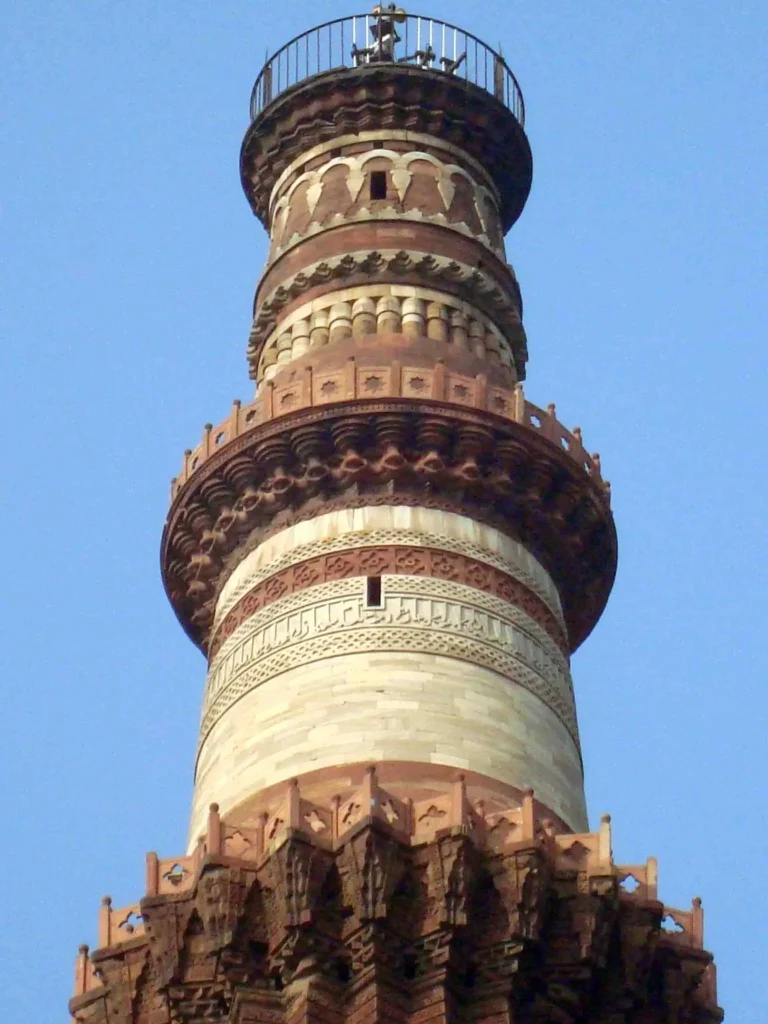
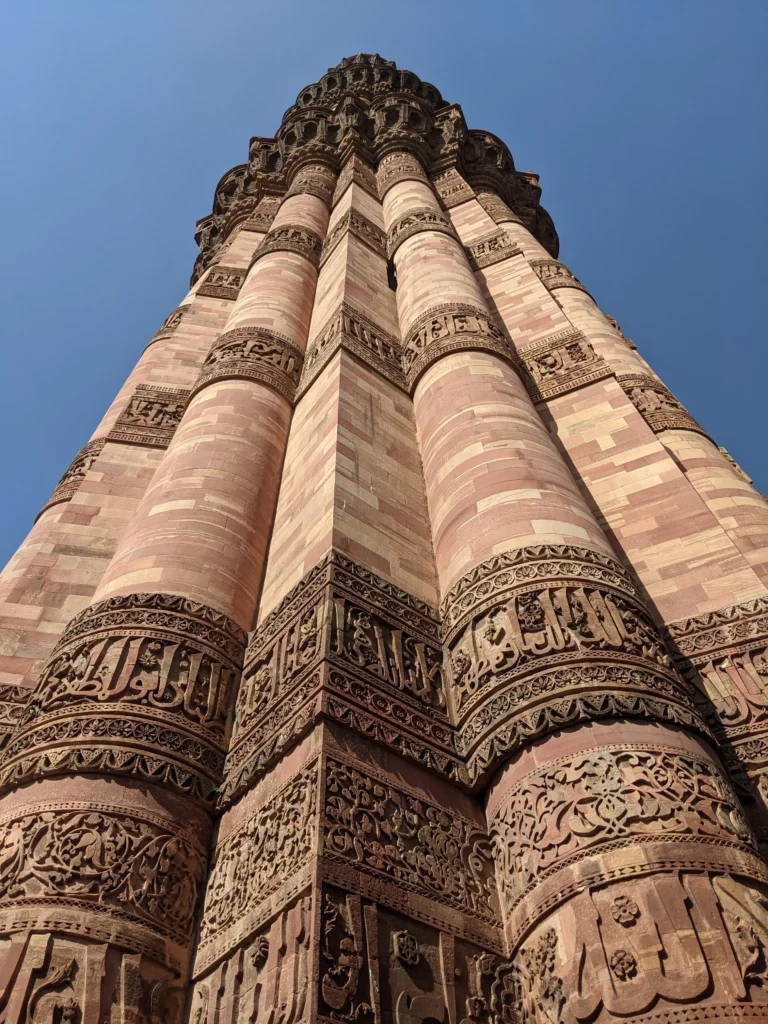
FAQs (Frequently Asked Questions) about Qutb Minar History
Here are some common questions that often arise when discussing the history of Qutb Minar:
Qutb Minar was initiated by Qutb-ud-din Aibak, the founder of the Delhi Sultanate, and completed by his successor, Iltutmish.
The construction of Qutb Minar began in 1199 AD and was completed in 1220 AD.
Qutb Minar stands at a height of 73 meters (239.5 feet), making it the tallest brick minaret in the world.
The Iron Pillar is an ancient metallurgical marvel located near Qutb Minar. Standing rust-free for centuries, it attracts the attention of historians and scientists due to its unique composition.
Yes, Qutub Minar is open to the public. Visitors can explore the monument and its surrounding complex during specified visiting hours.
Yes, there is an entry fee for visiting Qutub Minar. The fee may vary for domestic and international visitors, and additional charges may apply for camera usage
No, visitors are not allowed to climb the Qutub Minar for safety reasons. However, they can admire its beauty and explore the surrounding complex.
Yes, the Qutub Minar complex houses several other historical attractions, including the Quwwat-ul-Islam Mosque, Alai Darwaza, and the Iron Pillar.
The time required to explore the Qutub Minar complex depends on individual preferences. On average, visitors spend around 1-2 hours exploring the site.

